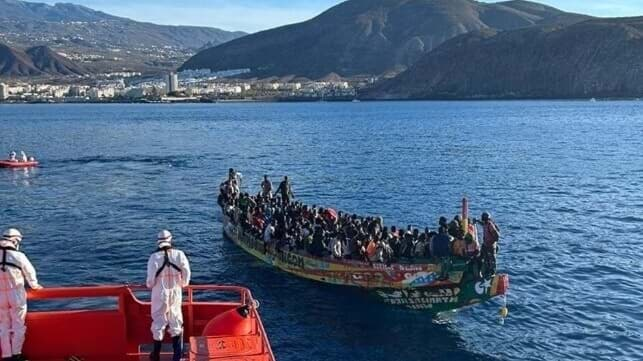Maritime migration in the Central Mediterranean makes headlines regularly, but the growing flow of migrants from West Africa to the Canary Islands receives less attention - and it is setting new records this year.
This route last peaked in 2006, when nearly 31,678 people made the crossing. It was relatively quiet for more than a decade, but it is picking up pace. Over 32,000 people have already arrived by small boat since January 2023, and there are two months left to go before the year's end. Nearly 15,000 arrived in October alone, a new all-time monthly record.
Driven by political unrest in Senegal, an increasing number of migrants are making the long journey northwest to El Hierro, Tenerife and Gran Canaria. Spanish rescue agency Salvamento Maritimo has been busy detecting and assisting the rustic wooden "cayucos" used for the voyage, which measure up to 90 feet long and can carry hundreds of people each. The boats are also setting new size records. Last month, a cayuco carrying 280 people arrived off the coast of El Hierro, the largest arrival ever, according to Salvamento Maritimo.
The long voyages from Senegal are perilous, and first responders are sometimes tasked with saving lives and recovering the deceased. In August, a fishing vessel rescued 38 survivors from a Senegalese boat that had gone adrift during an attempted crossing. The launch had started out with more than 100 people, but 60 passed away over the course of the failed voyage. An unknown number of vessels depart and never return.
Some passengers still perish on the successful voyages, too. On last Friday night alone, boats carrying more than 500 migrants were found off the coast of the Canary Islands, and among the occupants were four dead, according to El Pais.
Increased fishing pressure from European factory trawlers is among the driving factors behind the surge in migration, according to Prof. Mamadou Dimé of University Gaston Berger of Saint-Louis. Political unrest and limited economic opportunity in Senegal also contribute, as well as the employment opportunities available in Europe. As the Canary Islands are part of Spain, new arrivals often attempt to find employment within the EU.
The all-time high arrival numbers are straining response resources in the Canary Islands, according to the local government. "Migration management on the southern border must be a priority on the Spanish and European agenda," said Fernando Clavijo, the president of the Canary Islands, in a statement this week.
Senegal's government is cooperating with Spain to head off more migration attempts nearer to the point of departure. The Spanish government has donated six surveillance drones to Senegalese authorities for use in detecting migrant boats, and is increasing the number of deployed security personnel that it maintains to assist Senegalese forces on the ground. An estimated 7,000 people have been stopped and turned around so far this year - a fraction of the number of arrivals.
BY THE MARITIME EXECUTIVE


